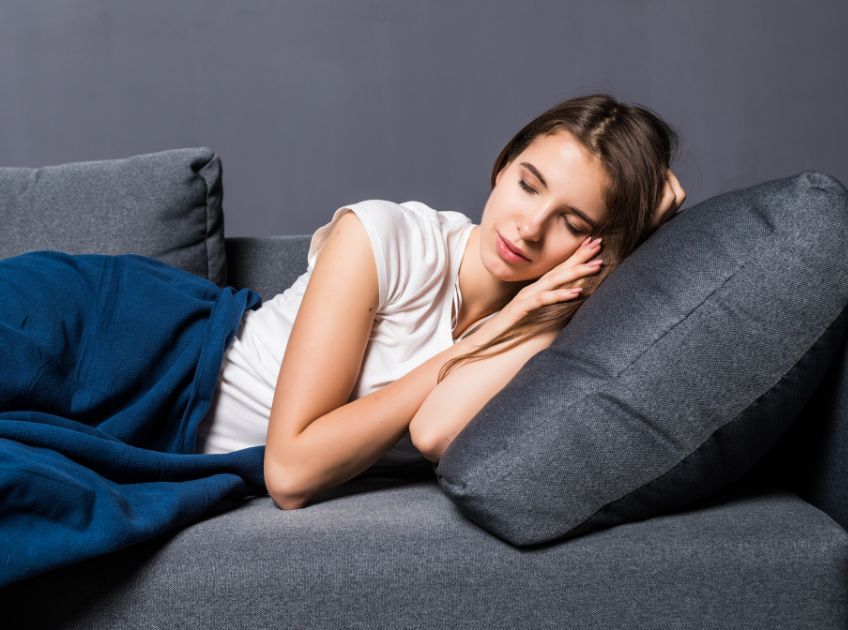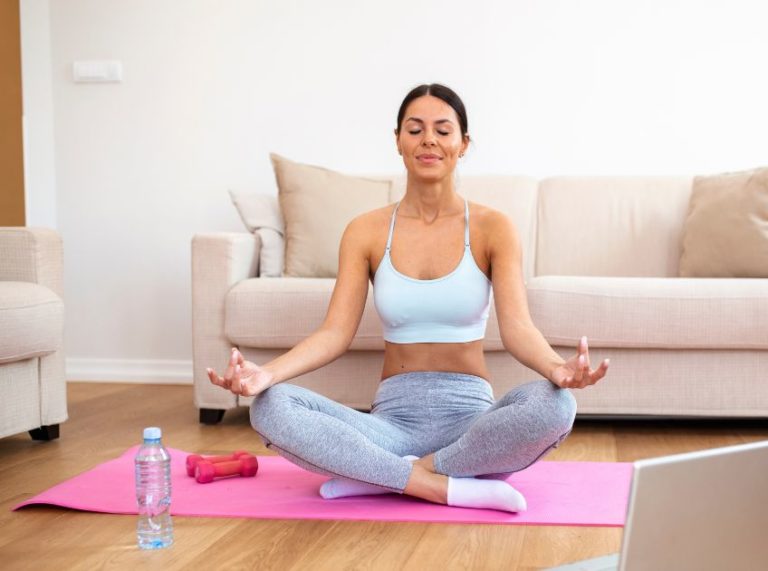
Important: This article is for informational purposes only. Please read our full disclaimer for more details.
Most women know that stress, diet, and exercise can influence their menstrual cycle, but what about the way they sleep? While sleeping position might not single-handedly change when your period arrives, it can influence your comfort, circulation, and hormonal balance, all of which play a role in menstrual health.
Understanding this connection can help you choose sleep postures that support your body’s natural cycle and make period days more comfortable.
Can Sleeping Position Influence Menstrual Cycles?
There’s no direct scientific proof that simply changing your sleep position will shift your menstrual timing. Menstrual cycles are primarily regulated by hormonal signals from the brain, specifically the hypothalamus and pituitary gland.
However, sleep quality, posture, and relaxation do influence:
- Blood circulation to the pelvic region
- Muscle tension in the abdomen and lower back
- Cortisol (stress hormone) levels, which can delay ovulation and menstruation if elevated for long periods
In short, sleeping position might not “start” your period, but it can make it easier for your body to function optimally, which supports a healthy cycle.
Best Sleeping Positions for Menstrual Comfort
1. The Fetal Curl
This classic position—lying on your side with your knees pulled gently toward your chest—helps relax the abdominal muscles and reduces tension in the lower back. It may also decrease pressure on the uterus, making cramps feel less intense. Many women instinctively curl into this position during their period because it creates a sense of security and warmth.
- Comfort Boost: Place a small, soft pillow between your thighs to maintain hip alignment and reduce strain on the pelvis.
- Why It Works: By slightly bending the spine and drawing the knees inward, you reduce pressure on the abdominal cavity, which can help relieve period-related discomfort.
2. Back Sleeping with Knee Support
Lying on your back can be very relaxing if your spine and pelvis are well supported. Adding a pillow under your knees helps maintain the natural curve of your lower back, eases tension in the hip flexors, and can enhance blood circulation to the pelvic area.
- Comfort Boost: Use a medium-firm pillow so your knees are slightly bent without over-arching your lower back.
- Why It Works: Proper spinal alignment reduces muscle fatigue, while improved circulation helps the body feel less tense during hormonal changes.
3. Side-Lying with a Pillow Between the Knees
This position is perfect for women who prefer side sleeping but want more pelvic stability. Placing a firm pillow between the knees keeps the hips aligned, reduces lower back strain, and may prevent restless tossing and turning.
- Comfort Boost: Add a small pillow or rolled towel at the waist for lumbar support.
- Why It Works: Misaligned hips during sleep can create tension in the lower abdomen—this position keeps your body in a neutral, stress-free posture.
4. Semi-Reclined Position (Great for Back Pain or Bloating)
Sleeping in a slightly upright position—similar to a recliner chair—can help relieve pressure on the lower spine and ease bloating discomfort. It’s especially useful if lying flat increases cramps or causes lower back pain.
- Comfort Boost: Use an adjustable bed, wedge pillow, or stack of firm cushions to elevate your upper body while keeping your knees slightly bent.
- Why It Works: Elevation reduces abdominal compression, which can be soothing if cramps are accompanied by digestive discomfort.
5. Supported Butterfly Rest (Hip-Opening Comfort)
Lie on your back, bring the soles of your feet together, and let your knees gently fall apart into a butterfly pose. Place pillows or bolsters under each knee to prevent overstretching. This yoga-inspired position can be deeply relaxing before or during your period.
- Comfort Boost: Add a small rolled blanket under your lower back for gentle lumbar support.
- Why It Works: Gentle hip opening increases circulation in the pelvic region, helping muscles release tension and promoting overall relaxation.
Sleeping Positions to Avoid for Period Health
Face-Down (Prone) Sleeping
Sleeping on your stomach can increase pressure on your abdomen and may worsen cramps for some women.
Back Sleeping Without Support
While lying flat on your back is not harmful in general, without a pillow under your knees, it may strain your lower back and create pelvic tension, which can be uncomfortable during your period.
What Science Says About Sleep and Menstrual Health
A study in Sleep Medicine Reviews (2018) found that poor sleep quality is linked to menstrual irregularities due to disrupted circadian rhythms and hormonal imbalance (1)(2). Another study in Chronobiology International (2015) showed that women with consistent sleep schedules had more regular menstrual cycles compared to those with irregular sleep patterns (3).
While these studies don’t focus on posture alone, they highlight that restful, uninterrupted sleep—supported by a comfortable position—can help maintain menstrual health.
Frequently Asked Questions (FAQ’S)
Q.Can my sleeping position make my period come faster?
A. Not directly, but certain positions can improve relaxation and blood flow, which may help your body stay on schedule if stress is a factor in cycle delays.
Q.What’s the best sleeping position during my period?
A. Most women find that the fetal position or back sleeping with knee support reduces discomfort and improves rest.
Q.Can poor sleep delay my period?
A. Yes. Chronic sleep deprivation or irregular sleep patterns can disrupt hormonal signals, which may delay ovulation and menstruation.
Final Thoughts
While your sleeping position alone won’t determine when your period starts, it plays a role in menstrual comfort, stress reduction, and overall reproductive health. Pairing good sleep posture with a consistent sleep schedule, balanced nutrition, and stress management can help your cycles remain regular and less uncomfortable.















